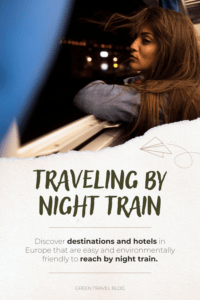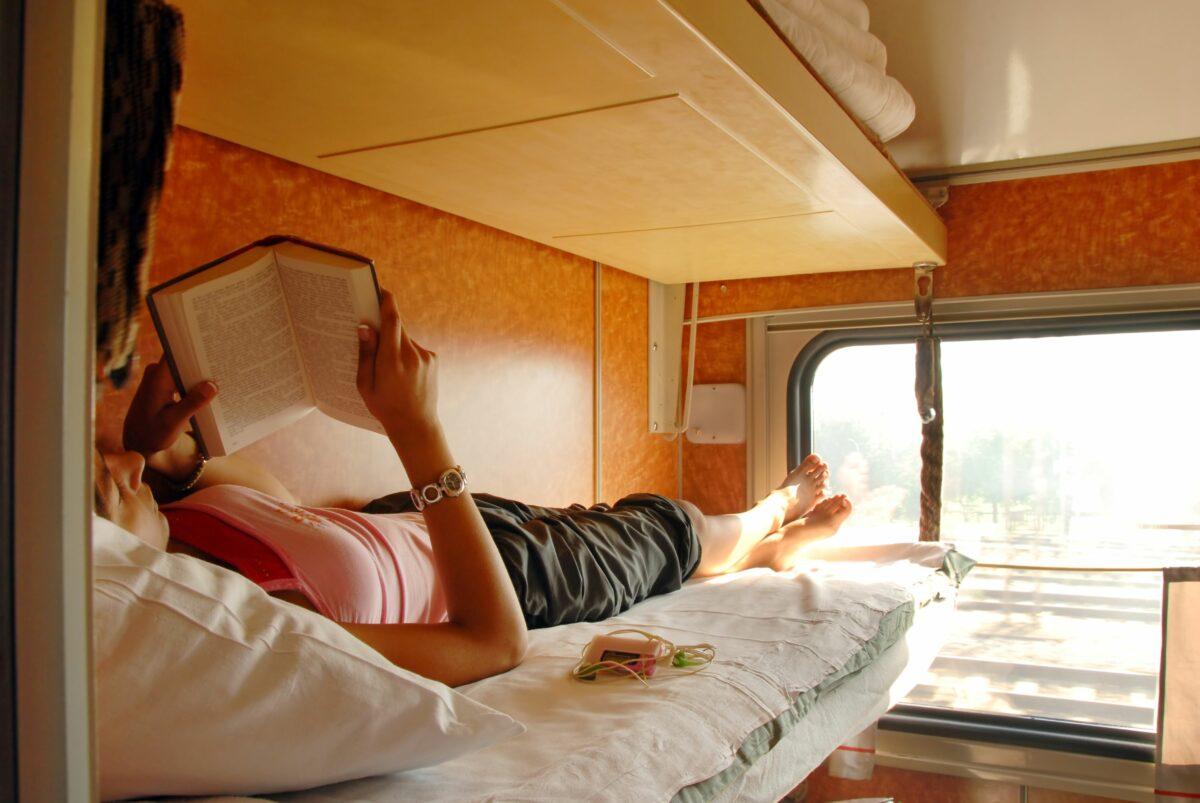Eco-friendly and comfortable travel through Europe? Night trains and sleeping cars are making a big comeback. Board in the evening and wake up to a vacation. And with the knowledge that you’ve reduced your carbon footprint. If you like the sound of this, check out the latest night train connections in Europe and how you can combine them with a stay at a Green PearlsⓇ sustainable accommodation.
Are night trains sustainable?
Since night trains are seen as an alternative to air travel, they can definitely be considered sustainable. Of course, railways also impact nature, but compared to cars and air travel, trains are the more environmentally friendly solution.
- For instance, according to the Swiss Federal Railways (SBB), traveling by train from Zurich to Hamburg saves about 170 kg of CO2 per person compared to flying.
- According to its own figures, the European Sleeper is 12.5 times more climate-friendly than flying and 8 times better than driving on the route from Amsterdam to Berlin.
- Austria’s ÖBB night train (Nightjet) runs on 100 percent green electricity.
- The high comfort of new night trains (such as the new ÖBB Nightjets) with more space (= fewer passengers) and private bathrooms with showers is not necessarily an ecological plus, but it helps to make night trains attractive.
- Unlike cars and buses, trains do not emit microplastics into the air through tire abrasion. (There is not enough research on how harmful microplastics actually are, but it is clear that tire abrasion is the largest source of microplastic emissions).
- Night trains do not play a role in discussions and measures regarding noise pollution and noise emissions, as they are very quiet compared to freight traffic.
Night trains are growing in popularity
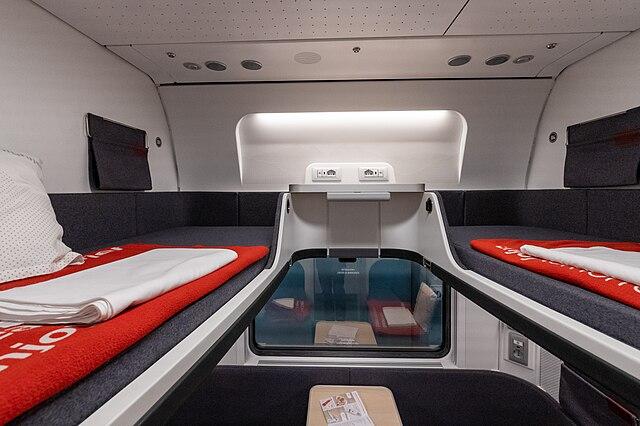
According to Tagesschau, in 2020 there were only 90 night train connections in Europe. In 2023, more than 200 connections. ÖBB recently announced that a further 24 Nightjets will be added by mid-2026.
The ÖBB Nightjet’s new night trains
At the end of 2023, the new ÖBB Nightjet trains started operating, offering even more comfort than the old ones and, above all, additional capacity! For us as passengers, this means more routes, more flexibility and more attractiveness. Reason enough for us to take a look at the facts:
- The passenger cars for the 24 new trains will be developed by Siemens Mobility and delivered by mid-2026. They will be built in Vienna.
- The new trains are not intended to replace old trains, but to complement and expand new routes.
- New standards for smoothness, accessibility and bike transport.
- Another new feature are sleeping pods in the couchette cars, offering more privacy.
- Instead of 6 beds, there are only 4 beds per compartment in the couchette car.
- Each compartment in the sleeping car has its own bathroom with toilet and shower, which reduces the capacity considerably. Only 20 beds fit in a sleeping car.
- The new Nightjet trains are certified for a speed of 230 km/h. (This is slightly less than the speed of ICE high-speed trains, which travel at up to 300 km/h).
Why are night trains rightly becoming popular?
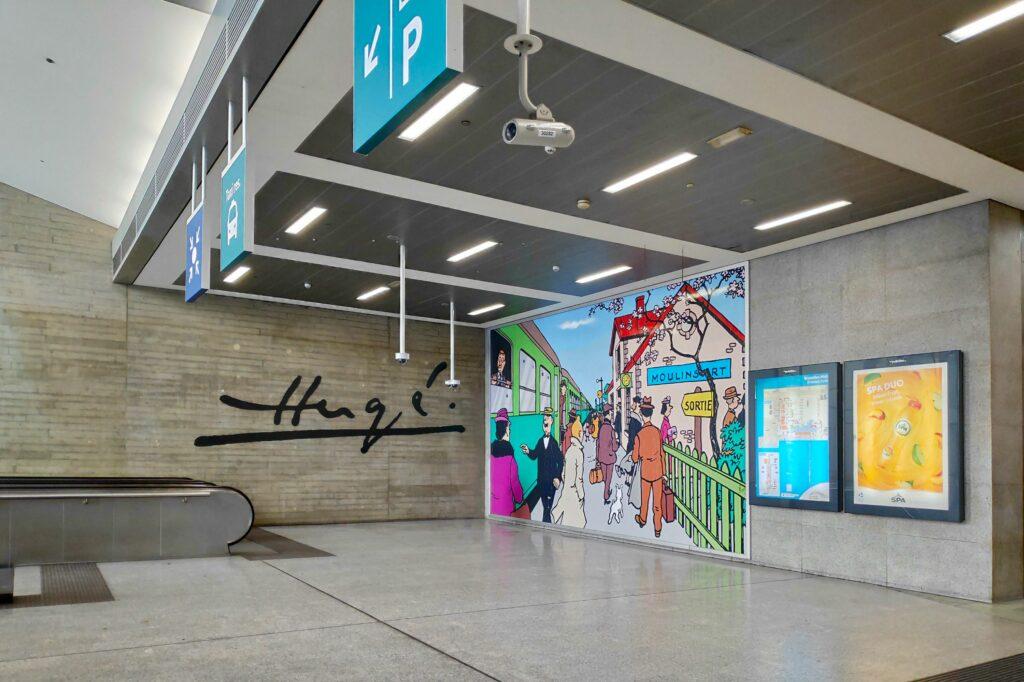
According to a survey conducted in 2024 by the German automobile club ADAC, 42 percent of Germans can imagine starting their vacation on a night train. The main reason: “Travel more relaxed and arrive refreshed.”
I’m a fan of night trains myself, and luckily I can sleep well anywhere. Personally, a night train has a touch of adventure to it and yes, I’m a big fan of “Tintin” (Les aventures de Tintin) where trains are often an important part of the adventure 🙂.
Another reason, of course, is sustainability, currently cited as one of the main reasons for the newfound popularity. This means that many travelers (like you?) prefer an environmentally friendly alternative to air travel. However, it is important to note that this is also supported by politicians. According to the Handelsblatt, ÖBB is profitable in Austria, but this was only made possible by subsidies from the Austrian government. The business is not considered “easy”. Deutsche Bahn, for example, discontinued its sleeping cars in 2016, and the French Thello night train followed suit in 2021. ÖBB is now filling the gap.
On the other hand, subsidies are also a problem when it comes to flying: while domestic and short-haul flights remain dirt cheap (due to factors such as a lack of taxation, etc.), a night train journey for the same route can quickly become very expensive.

New option: European Sleeper
In addition to the Nightjet, there is also the new European Sleeper. The initiative is organized as a cooperative and was launched in 2021 to great acclaim: the initial start-up capital of €500,000 was raised in just 15 minutes. There are now over 4,000 investors who have collectively invested more than €5 million. The European Sleeper already connects cities such as Brussels, Amsterdam, Berlin, and Prague—and more routes are in the pipeline.
In the next section, we take a closer look at what it’s like to travel through Europe in a sleeper car – with exciting night train routes and suitable sustainable accommodation.
“Traveling on our night train not only reduces your carbon footprint, but also gives you the opportunity to travel more slowly, enjoy the beautiful scenery, and connect with other travelers.” – European Sleeper
Across Europe by sleeping car – Four night train journeys + sustainable accommodation.
#1 By night train to Vienna (8 connections)
Vienna, the city of coffeehouses, parks and museums-a wonderful place for culture and surrounded by the most beautiful nature as well. Vienna is doing a lot when it comes to sustainability. The city aims to be carbon neutral by 2040 and is committed to zero waste, green mobility and sustainable construction. Due to its many parks, Vienna is also considered one of the “greenest cities in the world”.
Night train connections to Vienna
… on the Austrian Nightjet:
- Amsterdam – Münster – Nuremberg – Vienna
- Berlin – Dresden – Vienna
- Brussels – Cologne – Passau – Vienna
- Hamburg – Würzburg – Vienna
- Paris – Strasbourg – Passau – Vienna
- La Spezia – Milan – Vienna
… with the Polish PKP:
- Munich – Vienna – Warsaw
… or with Hungarian Railways MAV:
- Stuttgart – Vienna – Budapest
Sustainable accommodation near Vienna: Gut Guntrams
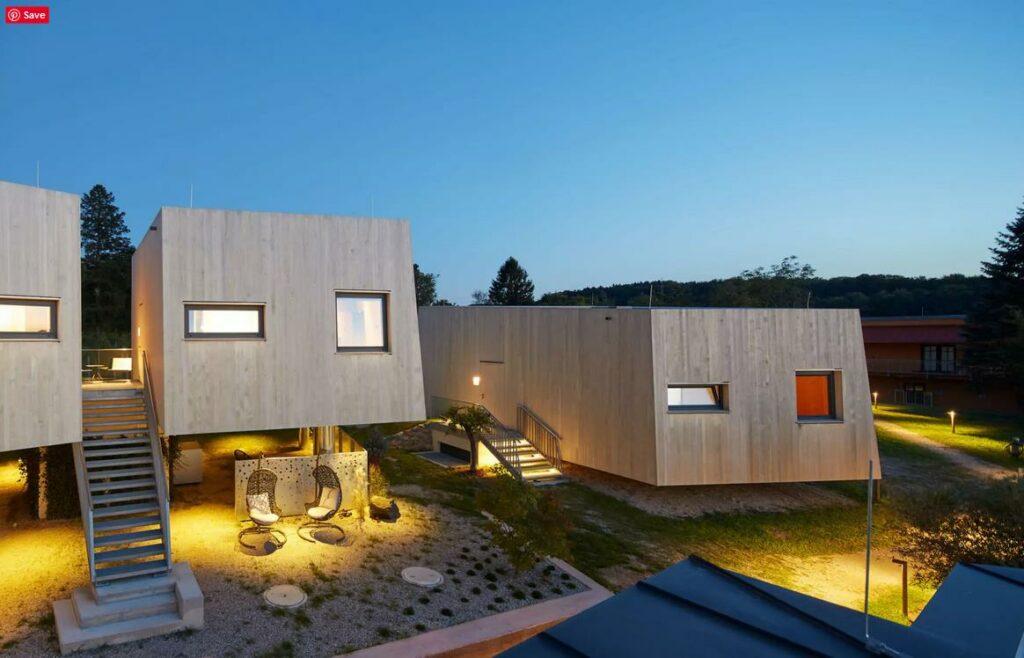
Gut Guntrams is not in Vienna, but 60 kilometers away on the edge of the Bucklige Welt. However, the unusual floating accommodation is well worth a visit. Gut Guntrams is its own organic retreat with a small nature museum, crystal garden, farm shop and a farm specializing in the preservation of old fruit varieties. If you’re looking to relax in nature after a day of culture in Vienna, this is the place to be
To find out how to reach Gut Guntrams from the Vienna train station (continue to Pitten station), click here.
#2 Awake in Munich (10 connections)
The Bavarian capital of Munich offers a combination of big city and nature. The Isar River flows right through the city and there is the famous English Garden. The historic old town, Marienplatz, Frauenkirche and Nymphenburg Palace are all must-sees. Unfortunately, Munich plans to wait until 2050 to become carbon neutral. But at least there are climate-friendly projects underway.
Night train connections to Munich with
… the Austrian Nightjet:
- Amsterdam – Munich – Innsbruck
- Brussels – Aachen – Munich
- Hamburg – Würzburg – Munich
- Milan – Padua – Salzburg – Munich
- Paris – Munich – Salzburg – Vienna
- Rome – Munich
- Venice – Munich – Stuttgart
… the Hungarian Railway MAV:
- Budapest – Munich – Stuttgart
… the Croatian Railways HZ:
- Zagreb – Ljubljana – Salzburg – Munich – Stuttgart
… or the Polish PKP:
- Warsaw – Krakow – Vienna – Munich
Eco-friendly accommodation near Munich: Gut Sonnenhausen
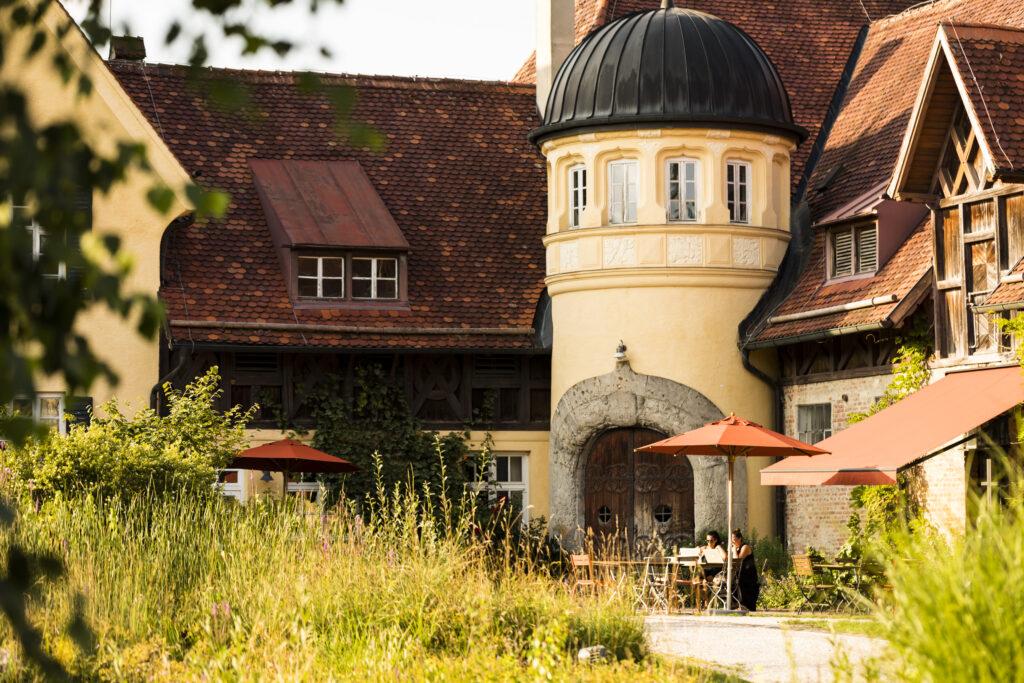
Munich is home to the Ecological Education Center, but if you want to see the ideas put into practice, head to Gut Sonnenhausen (about 30 kilometers southeast of Munich). Here, eco-pioneer and art collector Georg Schweisfurth has transformed a 120-year-old stud farm into a unique hotel surrounded by nature. Gut Sonnenhausen runs its own organic farm according to permaculture principles and uses only organic produce in the kitchen. However, the estate is difficult to reach by public transportation, so you will probably need to rent a car in Munich. You can choose to drive an electric car, as there are two charging stations on the property’s parking lot.
#3 Sleeping car to Milan (2 connections)
From the two cities mentioned above – Vienna and Munich – you can sleep throught to Milan. Italy’s fashion capital also has many famous addresses for sustainable vintage lovers. There is the Bosco Vertikale (Vertical Forest) – a green skyscraper in the middle of the city that stands for modern urban greening and biodiversity.
Nightjet connections to Milan:
- Munich – Padua – Milan
European Sleeper connection to Milan:
Sustainable accommodation in Milan: Hotel Milano Scala
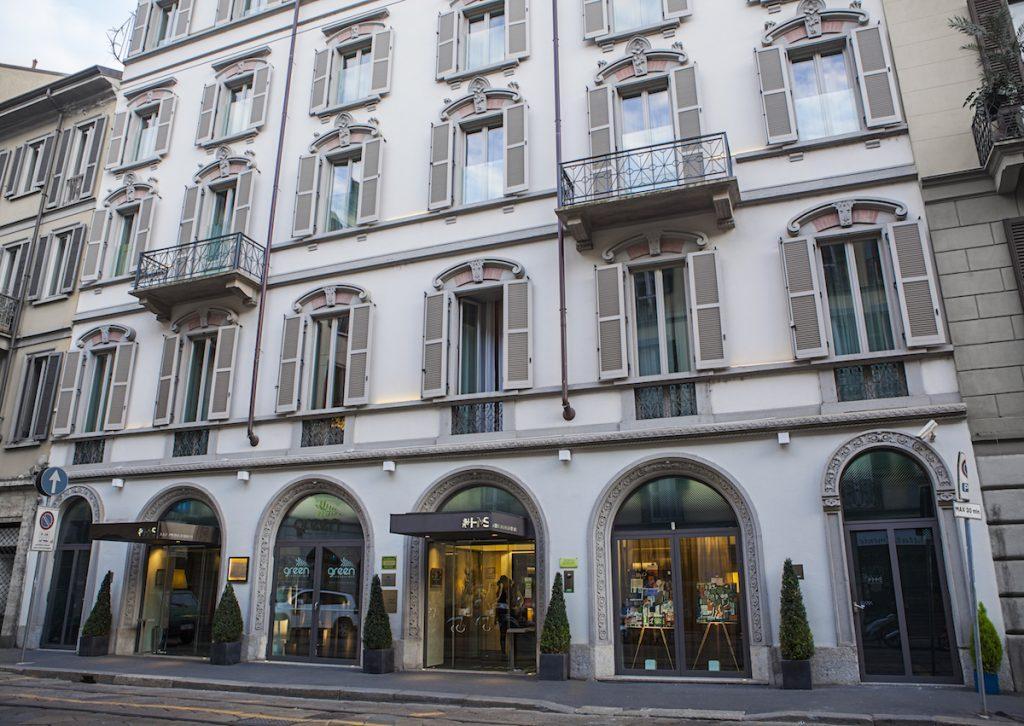
The Hotel Milano Scala is located in the center of Milan (within walking distance of the famous La Scala Opera House and other attractions). It is the first zero-emissions hotel in Milan and powered by green energy from its own geothermal probes. The roof terrace is particularly beautiful, where you can enjoy a wonderful end to an eventful day.
By night train to Paris (2 connections)
The French capital has once again used the 2024 Summer Olympics as an opportunity to showcase its green initiatives – even cleaning up the water in the Seine, with new bathing-corners in 2025. You can now enjoy a relaxed (!) bike ride in Paris, with a 10-kilometer running route along the banks of the Seine. For an alternative Paris, Barbara Tascijevic-Porwoll, owner of Green Spirit Hotels, recommends a visit to the REcyclerie. A café, repair shop, gardening project and cultural center all in one.
The Berlin-Paris route is one of the brand new Nightjet routes launched in December 2023. Since then, you can wake up in France’s capital three times a week (Mondays, Wednesdays, and Fridays). You board the train at 6:55 p.m. at Berlin Ostbahnhof or 7:08 p.m. at Berlin Hauptbahnhof and arrive at Paris Gare de l’Est at 9:38 a.m.
Nightjet connections to Paris:
- Berlin – Frankfurt – Paris
- Vienna – Mannheim – Paris
- Paris – Munich – Salzburg – Vienna
- Paris – Strasbourg – Passau – Vienna
Eco accommodation in Paris: Green Spirit Hotels
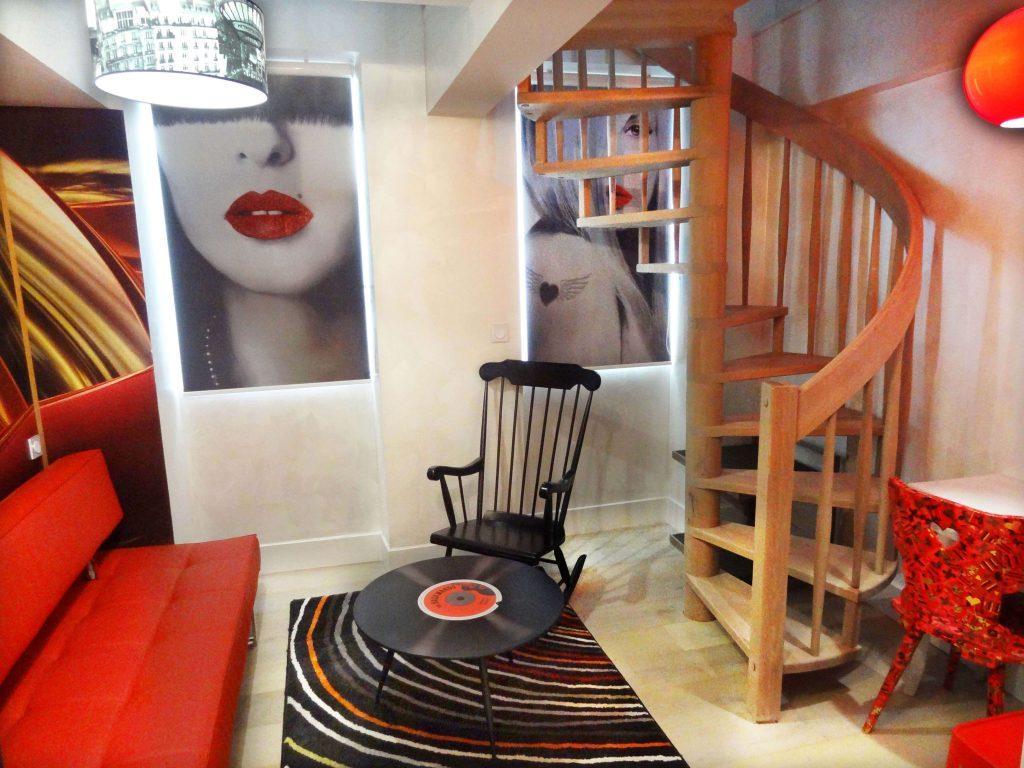
There are two Green PearlsⓇ accommodations in the lively 7th arrondissement: Hotel Le Pavillon and Hotel Amélie. These small boutique hotels are not only centrally located (the Seine, Eiffel Tower, etc. are within walking distance), but they are also ecological and individual. You can nevertheless enjoy your breakfast in the quiet inner courtyard.
By the way, Belgian reporter Tintin and his companion Snowy were also in Paris! So you have a good chance of experiencing an adventure…
This is an update from July 26, 2024.
Save this article for later!
